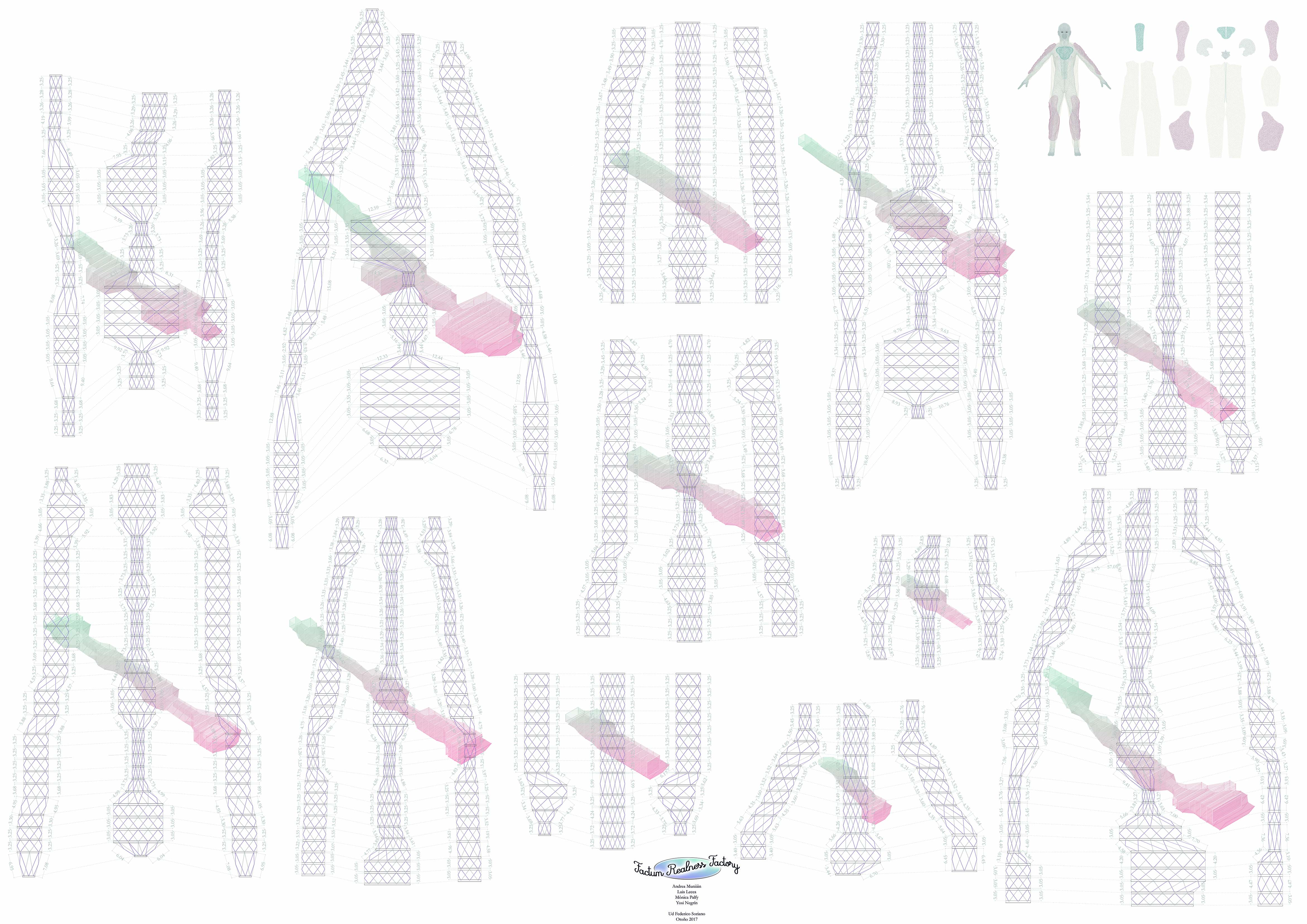
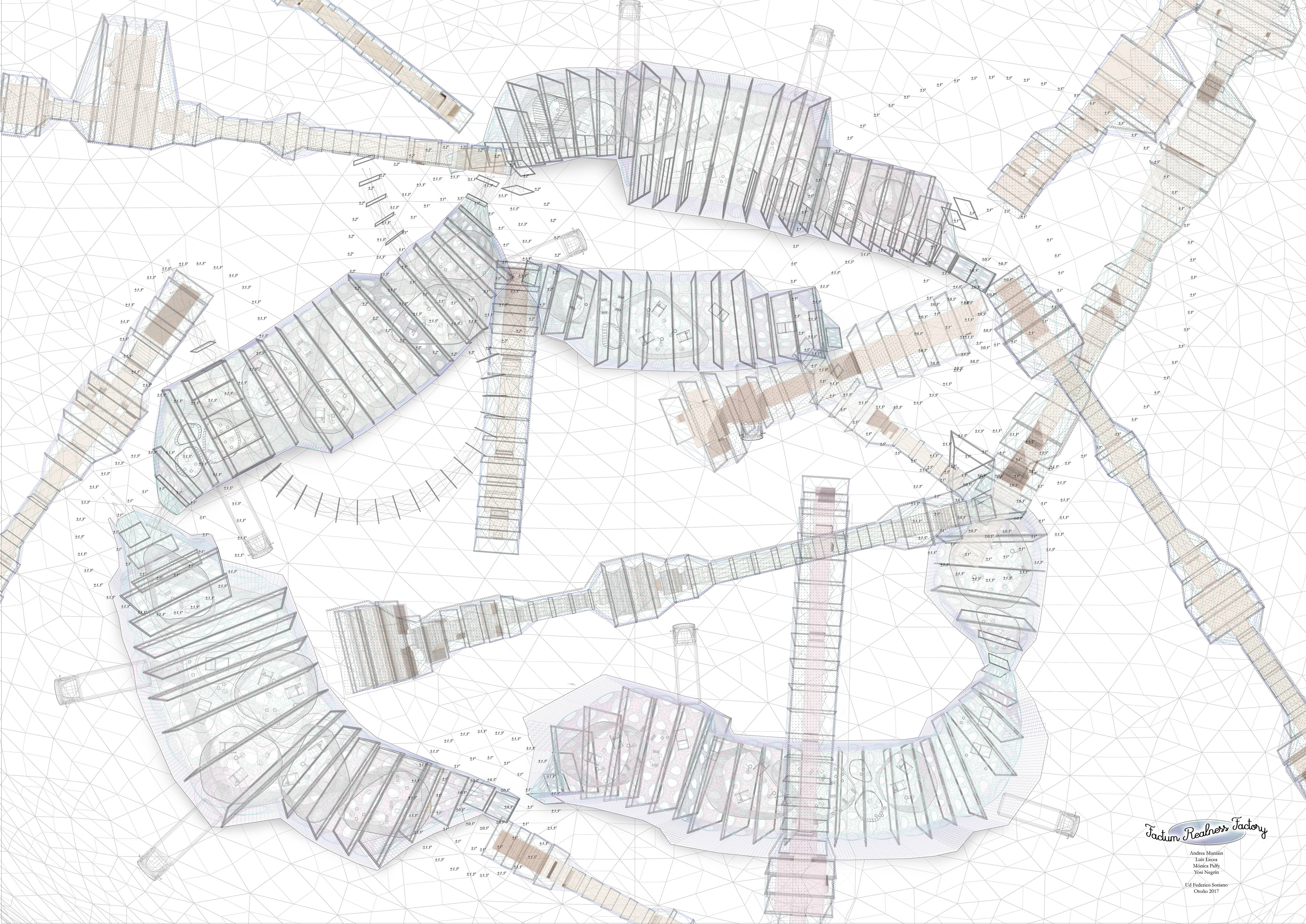
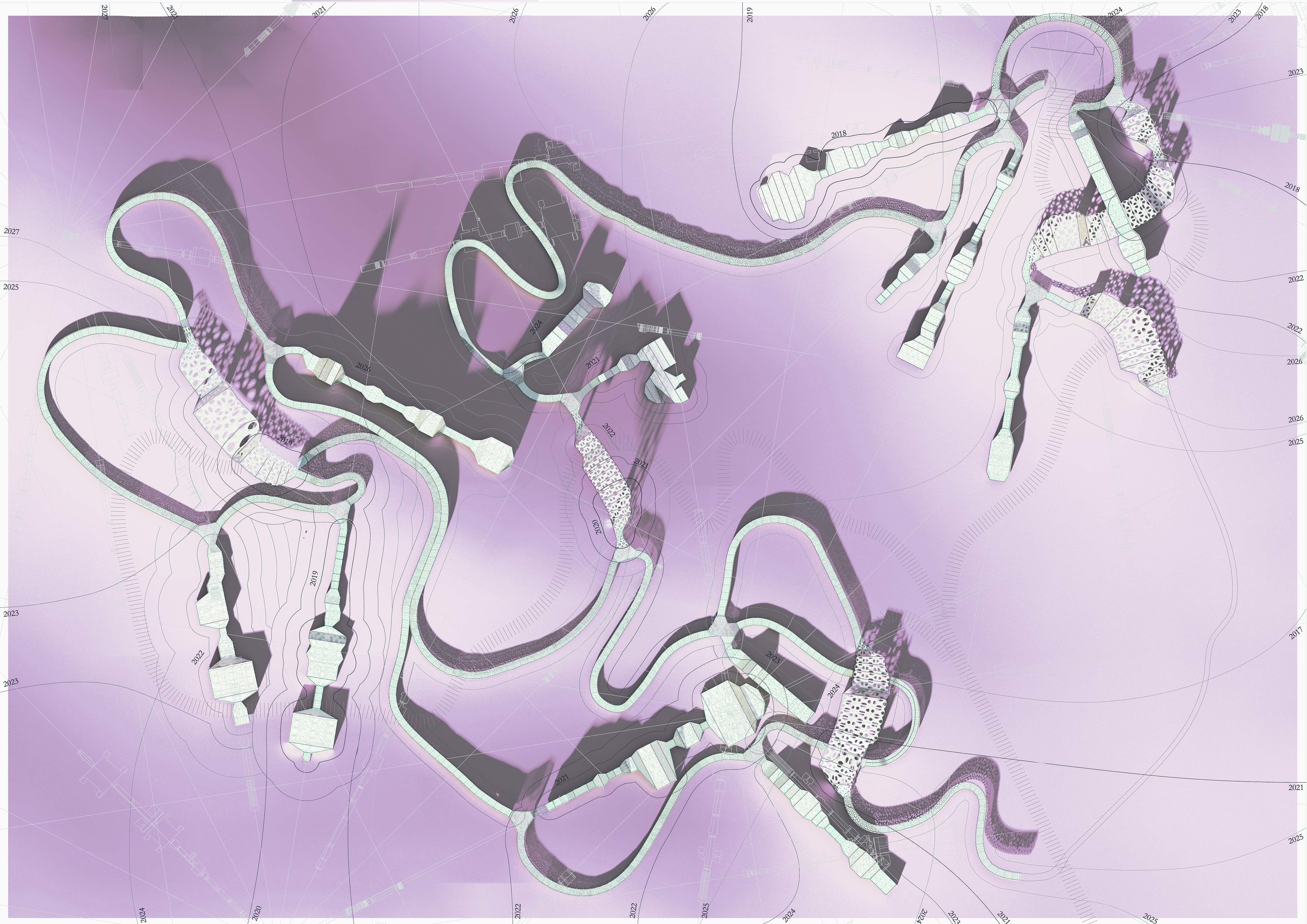
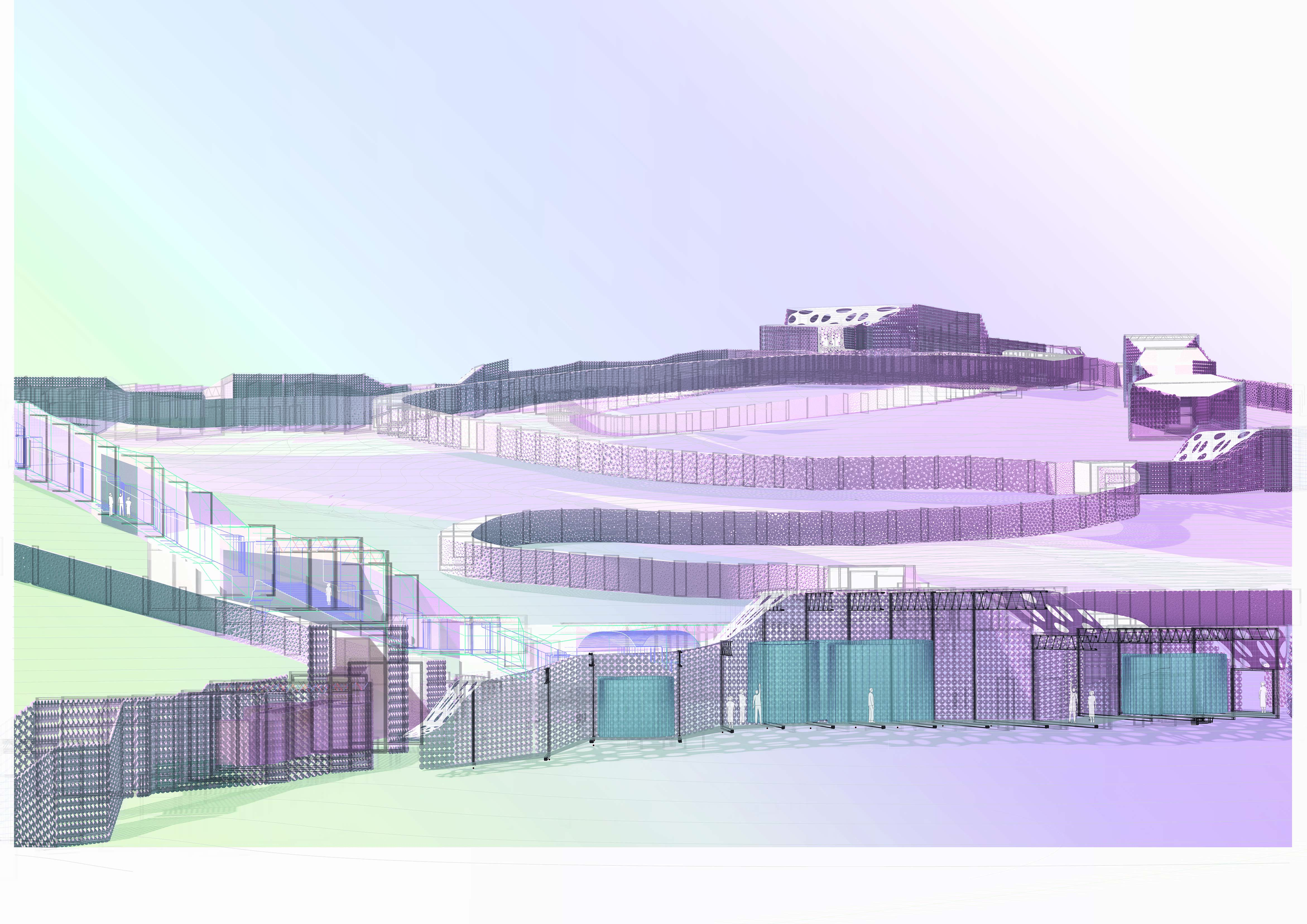
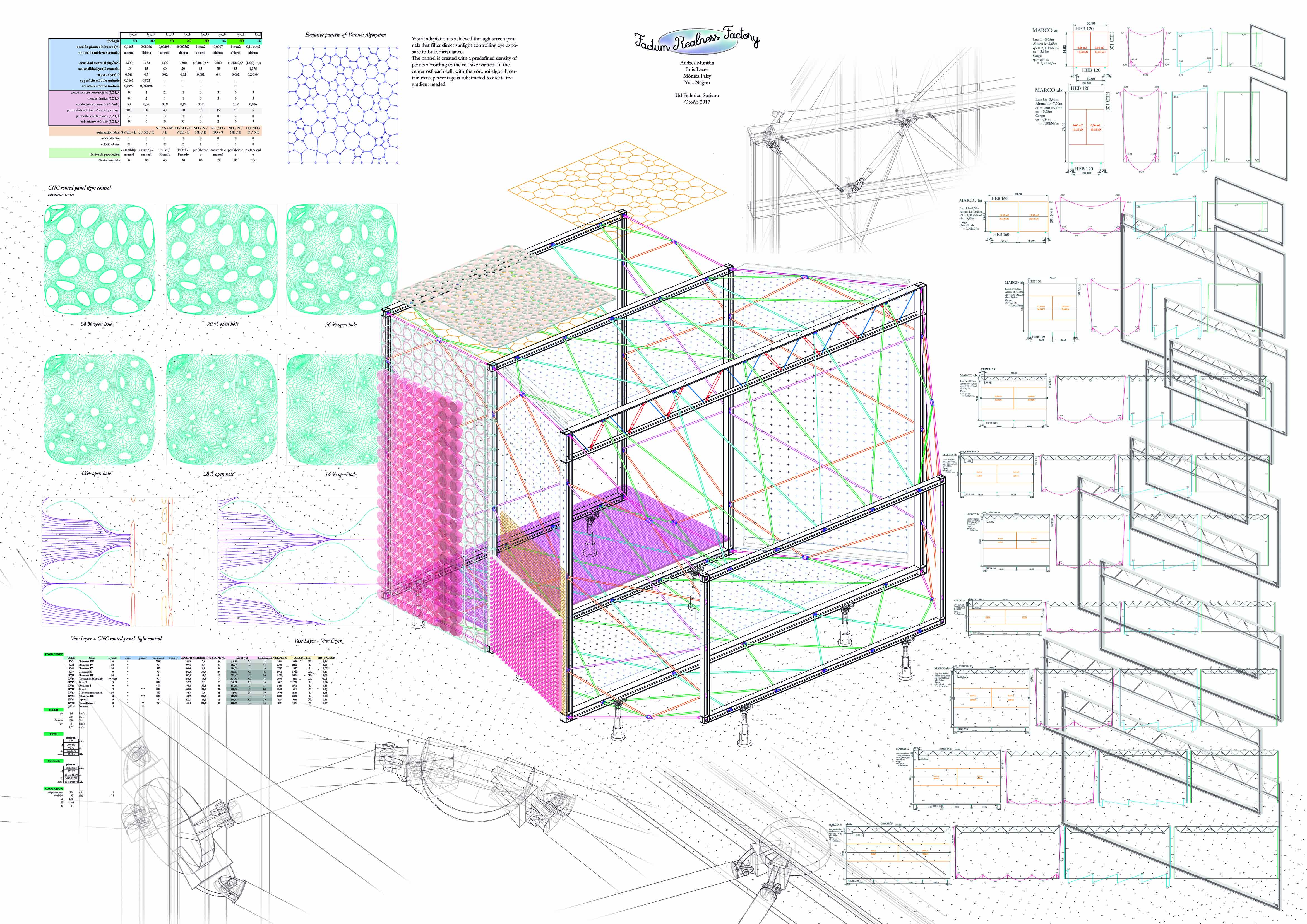
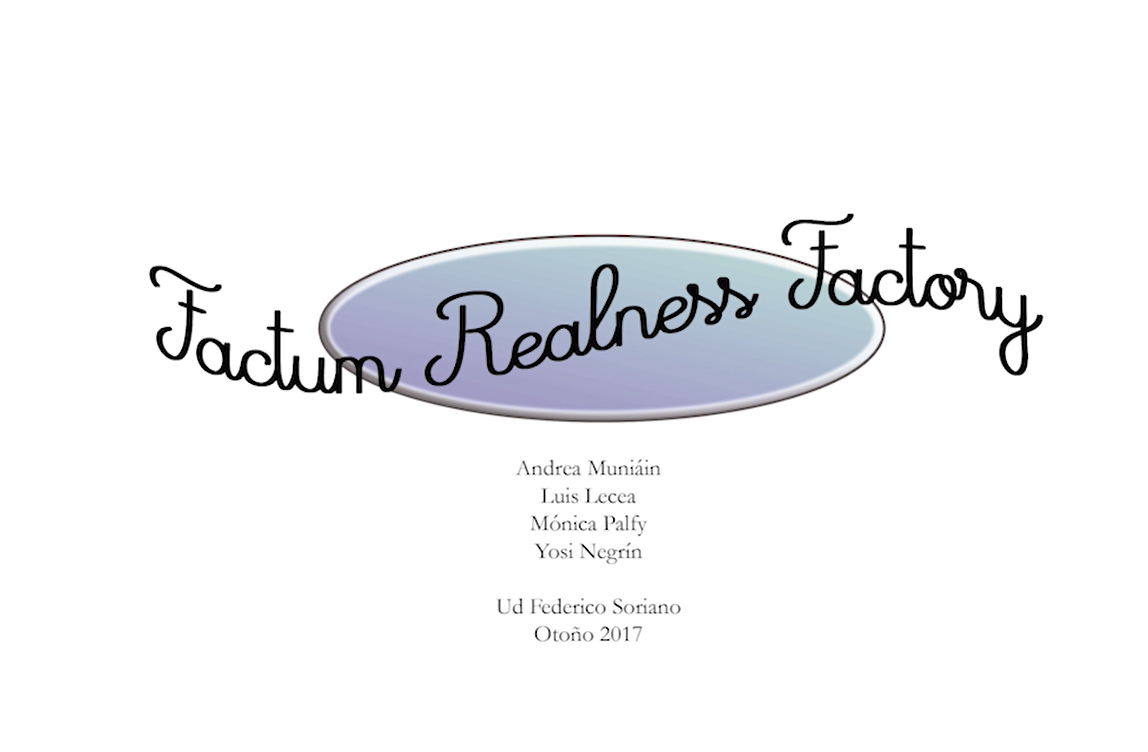

Factum is a foundation deditacted to heritage preservation through digital technics (scanning, photogrammetry, 3D printing), freezing, storing and reproducing time, history and culture. Their aim is to fabricate a facsimile for each of the tombs in the Valley of the Kings in Luxor, Egypt, in order to prevent further deterioration of the originals. Each step in the process implies time, and amount that provides a scale and a duration. With the current plan it would take 104 years for the client to see their goal accomplished. The project reduces that time dramatically. Each facsimile is placed according to its optimum relation between its shape and the most convinient slope of the ground for its execution. The tomb replicas are emphasised as unprecedented architectural objects. The Valley of the Kings is a void that grows in the mass of the mountaints; the Valley of the Replicas is a mass that grows in the void of the desert. The project constitutes a negative image of the heritage. A struture of frames made out of stadarised steel profiles grows in a stepped plan with a textile master pattern. Through it, an embedded substructure of crossed bars supports diferent sorts of envelopes, depending on the needs of the interior workshops and circulation spaces. The demands on precision and attention to detail in the process of manufacturing the facsimiles are meet with airtight spaces, sealed from wind and dust from the desert. PVC curtains allow light to go through, enclosing the CNC machines and the grit they produce in the designated areas. In order to make the experience of the facsimile more authetic than the one of the original tomb, circulations are desing according to the optimum time for the eye to accomodate the amount of light. Visual sensitivity is controlled by means of a specialised envelope, a perforated skin that varies in porousness along the paths that lead to the tomb replicas. This way, the project becomes a factory of realness.
video